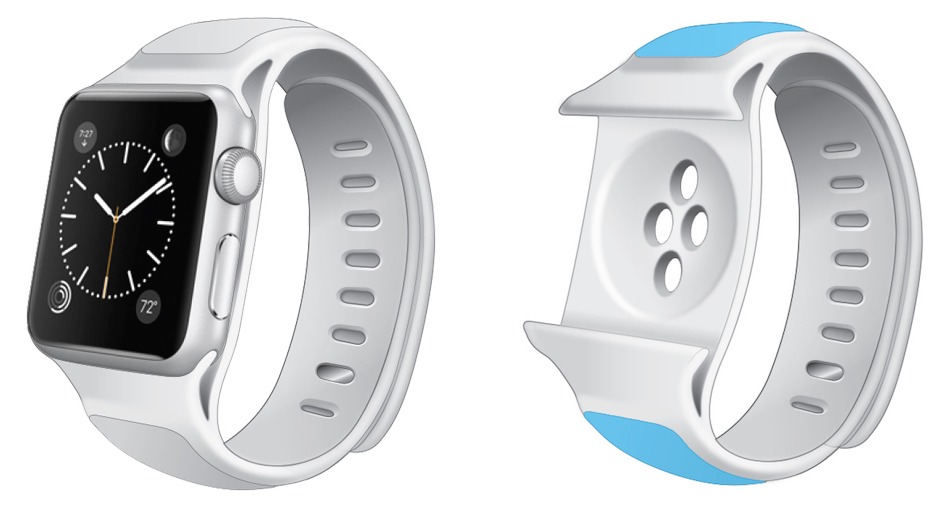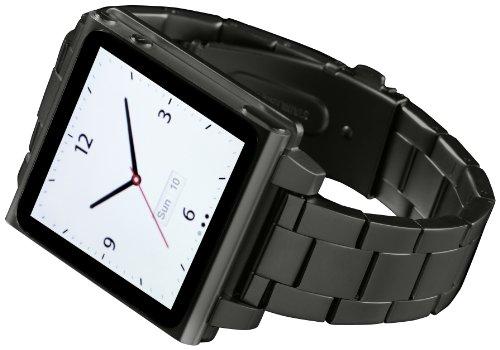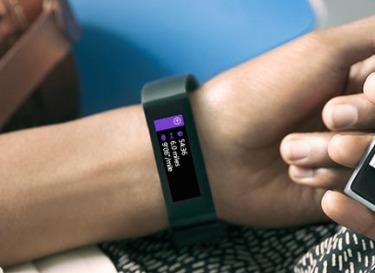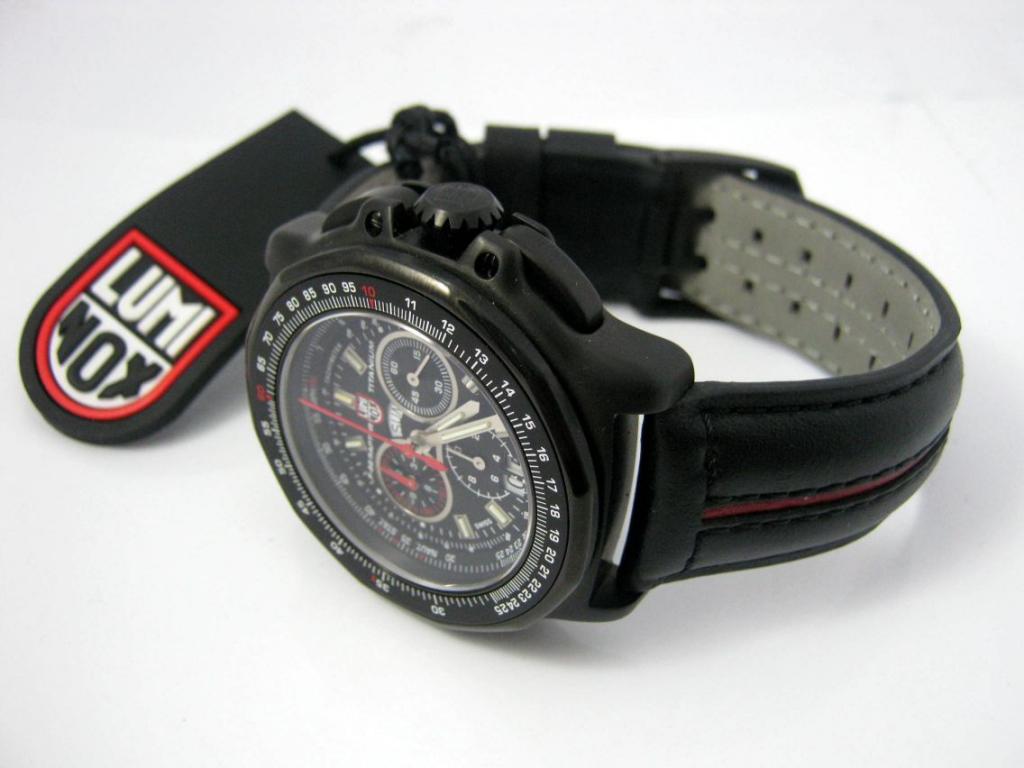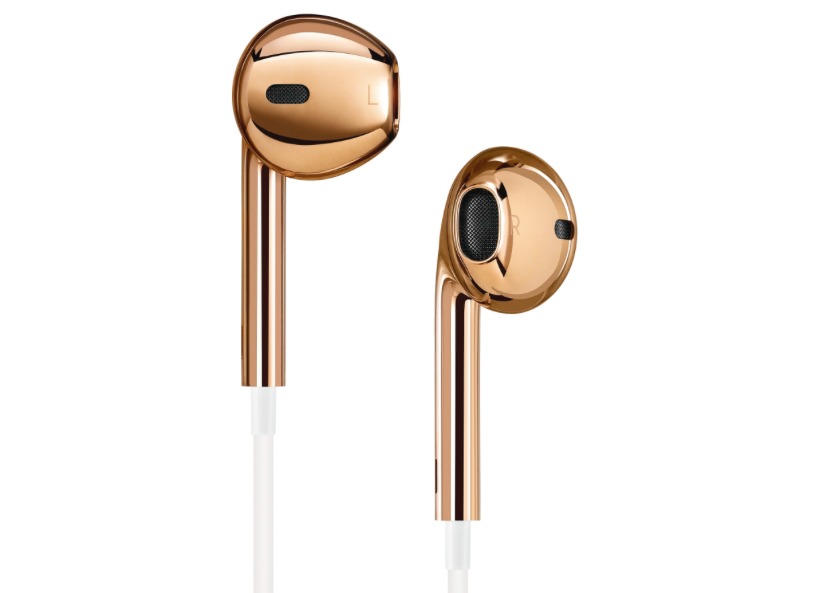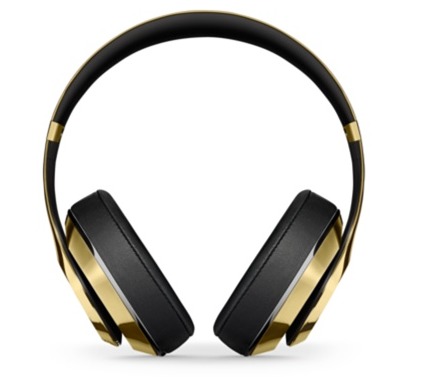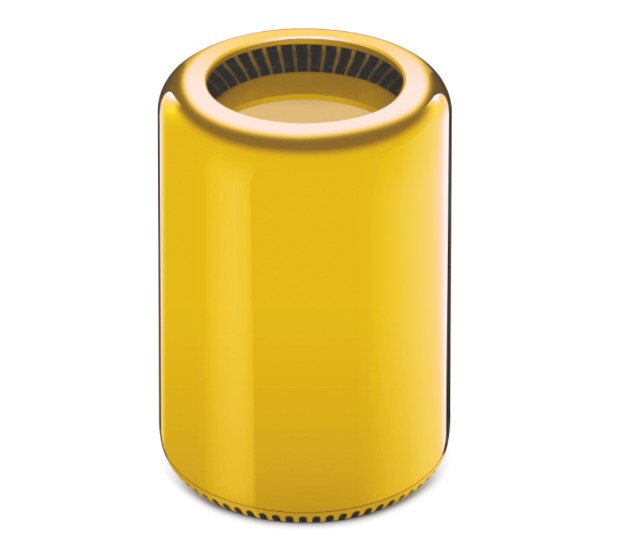TidBITS#1266/01-Apr-2015
We’re happy to announce a new service for our readers: TidBITS Online, where you can hear our latest articles. Tax season is almost over — did you know that you can now receive your refund in the form of iTunes credit? Joe Kissell explains how, and Adam Engst breaks the story about the lie detection code built into the Apple Watch. Michael Cohen takes a look at Apple’s new Mac micro desktop computer, and we give you an early look at some third-party Apple Watch bands. Finally, Jeff Carlson has the scoop on the expansion of Apple’s solid-gold Edition line to include more than just watches. Notable software releases today include Pixelmator 3.3.2, Microsoft Office 2011 14.5, Minecraft 1.9, and BBEdit 11.4.1.
IRS Offers iTunes Credit for Tax Refunds
April 15th is just around the corner, and in the United States, that means tax day. The Internal Revenue Service has long offered the option of receiving a tax refund via direct deposit, but this year, taxpayers can choose to receive a refund in the form of a credit for the iTunes Store, which means it can be spent on any digital media from Apple (music, TV shows, movies, books, and Mac and iOS apps).
This change comes as part of the U.S. government’s increased financial involvement with Apple, which started when Apple announced in February that Apple Pay will soon be supported for transactions such as admission to national parks, distributing Social Security benefits, and more.
With this new tax refund option, filers can specify an Apple ID directly on their tax forms (in place of a bank account and routing number), and the full amount of the refund will be made available to any device signed in to an Apple store (using iTunes, the App Store app, iBooks, etc.) with that Apple ID. (An IRS spokesperson said that the agency considered sending gift cards in the mail, but decided against it due to the risk of theft.)
Because the deal was struck after the physical 2014 tax forms were printed and distributed, iTunes tax refunds are currently available only to people e-filing their taxes with select e-file providers, who must update their software to see the revised forms. Ask your tax preparer to look for the 2015-04 revision of the appropriate tax form. The iTunes option appears on Form 1040 Line 76e, Form 1040A Line 48e, and Form 1040EZ Line 13e.
The IRS imposes a limit of $1,000 on iTunes credits; if your refund amount is higher than that, you must take it in the form of a check or direct deposit. Apple is reportedly in talks to offer a second option for tax year 2015: Apple Store credits, which would be usable for larger amounts of money, and which could be redeemed for Apple hardware and accessories.
Meanwhile, in an effort to avoid the appearance of partiality, the IRS is negotiating with other digital retailers, including Amazon and Google Play, to offer similar deals next year.
TidBITS Online to Bolster Membership Revenues
It’s no secret that technology publications are dropping like flies. Macworld’s print edition (coupled with massive staff layoffs), The Unofficial Apple Weblog (TUAW), and Gigaom have all disappeared in the last few months. Why? Display advertising just isn’t cutting it these days.
Here at TidBITS, we stabilized our business in 2011 by focusing on our paid TidBITS membership program (thanks to the 2,800 of you who are helping us keep going!). But we’re always looking for new sources of revenue that will enable us to pay more writers, redesign our Web site, and keep the servers running.
To that end, we’re pleased to announce TidBITS Online, which mashes together modern technology (podcasting) with a proven business model (pay-per-call). That’s right, instead of messing around with the inscrutable interface of iTunes or with fussy podcasting clients, you’ll be able to hear TidBITS articles read to you just by calling a phone number. It works fine from iPhones and landlines, though we haven’t yet tested from an Android or Windows Phone smartphone.
For the next month, TidBITS Online will be available for everyone for free — give it a try at 4TIDBITS64 (484-324-8764, standard calling rates apply). Yes, I was jazzed to be able to get such a cool number.
Starting in May 2015, TidBITS members will receive a different number for free access and everyone else calling this one will pay $0.05 per minute to listen to TidBITS articles.
The other thing that will change once the free trial month ends is that only TidBITS members will be able to leave voicemail comments; until then, voicemail commenting is open to everyone. Let us know what you think after you call in for the first time!
Apple Watch to Act as Lie Detector
Everyone knows that the Apple Watch can measure the wearer’s pulse, using sensors inside the four rings on the back of the watch. Normal heart rate monitors rely on skin conductivity, but Apple took the Apple Watch in a different direction, instead using infrared and visible-light LEDs along with photosensors. Pulse tracking may be useful for exercisers, and Apple has made much of how you can send your heartbeat to a loved one.
But if it struck you that Apple must have larger plans for these sensors, you’re not wrong. The question is not what the Apple Watch can sense, but what can be determined from what it does sense. What causes your heart rate to increase, apart from exercise? Try stress.
The first indication that Apple has something up its sleeve came in the form of a quickly deleted tweet from model and runner Christy Turlington, Apple’s poster child for using the Apple Watch in her marathon training. She wrote that her Apple Watch accused her of lying about how a long run had gone.
Accused her of lying? Discussing this with a long-time Apple developer who wished to remain anonymous revealed hints of a private API in the Apple Watch software development kit. Currently available only to Apple, the API goes by the name TruthKit, and returns a range of values that report on the delta between the current and recent past heart rates, among much else.
It sounds as though Apple is using the Apple Watch’s sensors as a mini lie detector, not so much to rat you out to your spouse (since it was on Turlington’s watch, not her husband’s), but to help you realize when you’re playing fast and loose with the truth.
But perhaps Apple will make it possible to share that information with trusted parties, much as you might share your location with your spouse via Find My Friends. It’s the ultimate statement of trust — your Apple Watch could prove that you’re telling the truth about not chatting up your ex-girlfriend on Facebook. The question is if TruthKit will ever be made available to developers, so apps could tell when you’re stressed while using them. How long before the first mood ring app extends itself to the Apple Watch?
The real win might come with Apple Pay, which already offers industry-leading security when it comes to storing and transmitting payment information in a way that can’t be compromised. Where Apple Pay is having problems, though, is with stolen credit card numbers being registered into the system (see “Apple Pay Exposes Insecure Bank Policies,” 18 March 2015). If the Apple Watch could transmit a “confidence score” of stress related to a transaction, banks would be better able to identify fraudulent transactions.
Of course, such a system could run afoul of false positive stress from other situations. Imagine someone using Apple Pay to buy a wedding ring — an expensive, meaningful purchase. It would be entirely understandable if such a purchase resulted in an increased heart rate without there being any intent to deceive.
Mac micro Redefines Desktop Mac Sizing
Apple fans were, for the most part, disappointed with the iteration of the Mac mini that came out late last year (see “Apple Launches iMac with Retina Display, Refreshes Mac mini,” 16 October 2014). Some even called it “a disaster,” citing its soldered non-upgradable RAM, lack of a quad-core processor option, and slower multi-core performance than its predecessor.
Now it seems that the 2014 Mac mini, which heretofore defined the low-end Mac product line, is about to be joined by an even smaller, more limited companion: the Mac micro, announced today by Apple. Due to be released later this month in conjunction with the Apple Watch, the Mac micro boasts a much smaller form factor than the Mac mini: its anodized aluminum casing (available in space gray, silver, or gold, and in an Edition model — see “Apple Dramatically Expands Edition Line,” 1 April 2015) is the same size and shape as a third-generation Apple TV.
Unusually, its peripheral connectivity options have more than a passing resemblance to the Apple Watch: the tiny (1.7 lb/0.77 kg in the non-Edition models) slab provides only wireless connectivity — 802.11ac Wi-Fi and Bluetooth 4.0 LE. Even video connectivity is wireless, provided over a dedicated Wi-Fi link, using a beefed up wireless video streaming protocol that Apple is introducing with this model: AirPlay 2.
Power is supplied via an aluminum inductive charging plate, similar in principle to the Apple Watch’s inductive charger; however, this charger delivers much more power to the device and charges its internal emergency battery. Yes, the new Mac micro has a battery that can keep the device running in a reduced power mode for almost 2 hours or, more likely, in sleep mode for several days. Instead of schlepping a laptop with a breakable screen back and forth between home and work, you can just grab your Mac micro off its inductive charging plate and toss it in your bag, plopping it back on another plate at your destination.
Even more interesting is the elimination of login passwords: for authentication, the Mac micro uses a beefed-up Touch ID component on the top surface that can store as many as 50 fingerprints. Even Touch ID may not be necessary, since a paired Apple Watch is also sufficient for authentication, and the Mac micro can be paired with up to five Apple Watches.
The Mac micro internals are set in stone: 8 GB of RAM, 256 GB of flash storage, and a triple-core Apple A11 variable speed CPU that can range from 1.7 GHz to 2.3 GHz, along with a dedicated Apple-designed video processor capable of driving a 5K display at 59.94 frames per second. Until we’ve had a chance to run benchmarks, we won’t know how the triple-core A11 compares with the dual-core Intel Core i5 processors in the Mac mini or the dual-core Intel Core M processor in the 12-inch MacBook.
Wondering how you will see that new AirPlay 2 video stream? Also announced today along with the Mac micro is the 27-inch Apple AirPlay Display, a 5K Retina video display designed to handle AirPlay 2 seamlessly. It uses the same panel as the iMac with 5K Retina display, offering 5120-by-2880 native resolution that you’ll likely view at the ultra-crisp logical resolution of 2560-by-1440. The aluminum base of the display, which looks nearly identical to the 27-inch Thunderbolt Display, includes an inductive charger for a paired Mac micro. On the back it offers ports for Thunderbolt 2 and Gigabit Ethernet, three powered USB-C ports, and three powered USB 2.0 ports. The AirPlay Display, slated to ship 1 May 2015, will cost $2,199.
Apple also plans to release a $99 AirPlay 2-to-HDMI/DisplayPort adapter for connecting the Mac micro to more conventional video displays. That device is slated for a “mid-summer” release, according to Apple.
The normal colors of the Mac micro will sell for $449, including an Apple Wireless keyboard and wireless Magic Trackpad that incorporates the new Force Touch technology (see “Force Touch Trackpad Makes MacBooks More Compelling,” 20 March 2015). The gold-plated Apple Edition Mac micro will cost $25,000. As with the 12-inch MacBook, it seems that Apple may be signaling a technological sea change with the move to all-wireless connectivity, but in such a way that those who require the capabilities of the previous models have some time to prepare.
In the meantime, Apple’s desktop lineup is just as confused as the notebook lineup. For instance, the Mac mini remains in the lineup with no technical or pricing changes. For $499, the Mac mini offers significantly more storage and RAM expansion options, and is likely to outperform the Mac micro. Plus, the Mac micro is meant to be paired with an AirPlay Display, and their combined price is $149 more than the $2,499 iMac with 5K Retina display, but for a combination with less performance and fewer expansion options.
Early Look: Eight Custom Apple Watch Bands
The popularity of the iPod had an unexpected effect — the creation of a secondary market in custom cases. For several years, there were 40–50 such vendors at Macworld Expo, and the iPhone and iPad received similar attention — there must be thousands of iPhone cases to choose from now. It’s unlikely we’ll see the Apple Watch wrapped inside a bulky case (though perhaps OtterBox will offer a waterproof skin), but we’re already seeing custom watch bands. Here are a few of the more interesting ones (not to mention the Kickstarter project to create an adapter that would let you use any other band).
Reserve Strap — Apple claims that the Apple Watch has “all-day” battery life, but that reportedly equals only 12-14 hours in real-world use. Nike Fuelband alum Lane Musgrave has a solution for those who need more time — the Reserve Strap, which builds 400 mAh of lithium-polymer cells into a flexible silicon band. It uses magnetic inductive charging, just like the Apple Watch’s normal charger, and features holes in the band so the Apple Watch’s sensors can see through. It’s available for pre-order for $249.99.
Garmin ForeRunner 401 — Borrowing a version number from their Foretrex series of wrist GPS devices for hikers, Garmin will soon be introducing the ForeRunner 401, which embeds Garmin’s proprietary GPS chip with its own battery in a waterproof silicon band. You’ll need Garmin Connect for iOS to install Garmin’s Apple Watch app to control the ForeRunner 401 band, but once installed, it will enable the Apple Watch to track your location without needing the paired iPhone, something many runners will appreciate. Once you finish your run and reconnect to your iPhone, the ForeRunner 401 will automatically upload your activity to Garmin Connect on the Web. Expected in June 2015, the ForeRunner 401 will retail for $199.99.
Nike MotionBand — Our next strap comes from sports product company Nike. Cool as the Reserve Strap sounds, batteries are so last century. Big Swoosh’s $429 MotionBand relies on PowerFelt, a “topological thermoelectric organic material made up of multi-walled nanotubes that harvests the thermo and turbulent motion that occurs naturally in our environment and converts it into usable electrical energy.” In other words, the PowerFelt material in the MotionBand converts your body heat and arm motion into electricity — theoretically enough to keep the Apple Watch running indefinitely, at least for runners and others who move their arms while exercising. It will also probably be popular in cultures where people can’t talk without expansive hand gestures.
Belkin SafeBand — Concerned that your new Apple Watch may give you wrist cancer? Belkin has just the thing to put your mind at ease. Based on the company’s FlexWear band for the iPod nano (pictured), the SafeBand is a lead alloy band for the Apple Watch that’s designed to block potentially hazardous radio waves. The 50-link band will be available in gun metal black, space gray, 50 shades of grey, and Susan G. Komen™ Passionately Pink™ later this year, weighing in at only 1.1 pounds (0.5 kg). Pricing has not yet been announced.
Microsoft Band for Apple Watch — If you can’t beat them, join them. Microsoft has adapted its standalone Microsoft Band fitness tracker to be an accessory for the Apple Watch. It’s nearly identical to the original product, featuring a distinctive purple-tinted display that sits on the inside of your wrist and is powered by its own independent battery. The $199.99 Band will track your fitness goals via the Microsoft Health app on your iPhone, and include a license for Microsoft’s upcoming Office for Watch
suite.
Apple GarageBand Band — The product of a skunkworks project within the Apple Watch division that’s slated to ship in time for the 2015 holiday shopping season, the awkwardly named GarageBand Band’s goal is to prove that the Apple Watch can be used to create as well as listen to music. When you’re wearing an Apple Watch with the GarageBand Band attached and the GarageBand app open on your iPhone, you can turn arm motions and even your heartbeat into musical notes. Rumor has it that Activision is porting its Guitar Hero code to iOS (including AirPlay support for Apple TV display), with an eye toward using the Apple
Watch with GarageBand Band as a controller for its new classical music Conductor Hero game.
Omnilink Tracking Band — Bowing to the reality of wealthy drug kingpins being able to live a life of relative luxury in prison and often returning quickly to civilian life, electronic monitoring company Omnilink has announced the Tracking Band for Apple Watch. The form-fitting, hardened-steel band, which can be removed only with special tools, features its own GPS chip, battery, and dual alarm (audible local and silent remote) to help guards and law enforcement officers track inmates and parolees at all times. Plus, with technology from Lamperd Less Lethal (the company that had been working on a so-called “safety bracelet” for airline passengers — see the video), Omnilink’s Tracking Band for Apple Watch can use electro-muscular disruption technology to override the wearer’s central nervous system for several minutes. It’s basically a wearable Taser, controlled by a companion app that would monitor heart rate and activity to detect possible violent behavior, warn law enforcement, and even automatically stun the wearer if certain conditions were met. Price has not yet been announced.
Lockheed Martin BlowBand — The Pentagon is exploring potential applications for the Apple Watch in military intelligence, but security is a prime concern. What if a U.S. agent were captured wearing an Apple Watch containing confidential information, or if an enemy combatant were to obtain an Apple Watch used for intelligence-gathering operations? That’s where Lockheed Martin’s BlowBand comes in (shown below on the Luminox F-22 Raptor Series A.9278). The rugged Kevlar band is filled with C-4 plastic explosive, which is detonated when the BlowBand is removed without proper authorization, destroying the Apple Watch instantly. Each BlowBand is estimated to cost $100,000,
and obviously will not be available to the general public.
Apple Dramatically Expands Edition Line
Apple’s 18-karat Apple Watch Edition turns out to be just the tip of a gold-plated spear. Apple today announced additional gold products that will accessorize existing items in its family.
Pick Up the Gold Courtesy Phone — When Apple originally introduced the Apple Watch Edition, we knew a matching gold iPhone was sure to follow. Of course, there’s already an iPhone in gold-tinted aluminum, but the Apple Edition iPhone 6 and Apple Edition iPhone 6 Plus use 18-karat yellow or rose gold in place of aluminum. They come in the same configurations as the existing models, and prices begin at $20,000 for a 64 GB iPhone 6 and top out at $22,000 for a 128 GB iPhone 6 Plus. (Apple is wisely not offering 16 GB configurations for the Edition models.)
The problem with a gold-encased iPhone, however, is the risk of damage due to dropping. The last thing a customer would want to do after buying a gold iPhone is to hide the precious metal with a leather case, so Apple is also offering a clear polycarbonate case developed to the company’s exacting standards for strength and clarity. The iPhone Edition Clear Case costs $129.
Golden Ear — At the most affordable end of the yellow- or rose-hued spectrum, Apple is introducing Apple Edition EarPods, solid 18-karat gold earbuds. The cabling is still Apple’s iconic white, but the earbuds themselves are solid gold.
These aren’t the first gold EarPods we’ve seen. Jony Ive and Marc Newson’s Project (RED) charity auction in 2013 featured a single set of gold EarPods that sold for an amazing $461,000. No doubt designing products for that event represented the first steps in developing the gold formulations for the Apple Watch Edition. You’ll be able to snag a pair of Apple Edition EarPods for the comparatively low price of just $2,000 in either rose or
yellow gold finishes.
Apple is also making an accessory push back into the audio field. No, not a gold version of the iPod Hi-Fi, but the cables that connect audio components. The new Apple Edition Beats by Dr. Dre Solo G headphones feature gold-plated (not solid gold, purely because of the weight) earcups and gold accents on the connecting headband, and sell for $3,000.
Apple is taking pains to mention two significant technological advances in the headphones. The acoustic components have been completely redesigned by the same team that improved the EarPod technology, leading to “richer, fuller sound across all audible wavelengths.”
More significantly, the headphones incorporate 18-karat spun gold internal wires instead of traditional copper cabling. Although reminiscent of Monster’s absurd gold-plated cables, Apple is touting this new solution as superior. According to the company, sending audio signals end-to-end over gold dramatically reduces the amount of signal loss compared to typical audio cables; products made by “competitors” (Apple refuses to mention other companies by name) lose fidelity when bridging between copper internal wires and the gold or gold-plated connectors.
Golden Delicious — Apple isn’t limiting its new bling to wearables, promising both the Apple Edition Mac micro (for full details, see “Mac micro Redefines Desktop Mac Sizing,” 1 April 2015) for 24 April 2015 and the new Apple Edition Mac Pro for 1 June 2015. The cylindrical Mac powerhouse is plated with 18-karat rose or yellow gold, rather than being made of solid gold, to take advantage of the aluminum thermal core developed to funnel heat away without a traditional array of heat sinks and fans.
This variant also has a predecessor from the Project (RED) auction, a red-tinged aluminum model that sold for $977,000 to former Apple executive and Nest designer Tony Fadell.
The Apple Edition Mac Pro is available in just one configuration that includes a 3.5 GHz 6-core Intel Xeon E5 processor, 32 GB of RAM, dual AMD FirePro D500 with 3 GB GDDR5 video processors, and 512 GB solid-state storage. It sells for $30,000.
“Jony Ive has been designing our computers to look good from every angle since the Twentieth Anniversary Mac,” said Apple CEO Tim Cook. “A Mac is the best personal computer you can put onto a desk, but it’s also a personal statement.”
Apple reportedly considered producing a gold iMac, but decided not to due to the amount of gold required to cover the large surface area on the back of the case that wasn’t generally visible. Also, according to sources at Apple, Ive and his team were not happy with the fact that people would inevitably attach Post-it notes to the gold finish below the screen.
Similarly, Apple is keeping the gold on its laptops limited to the anodized gold aluminum variant currently offered on the new 12-inch MacBook (see “New 12-inch MacBook Joins Updated MacBook Air and MacBook Pro,” 9 March 2015). Although a solid gold MacBook would be stunning, it would also be a weighty model in a line of devices known for being thin and light.
A Golden Sunrise — These gold products represent an intriguing new approach for Apple, which has no doubt long been frustrated to watch companies such as Brikk take its intricately designed products and festoon them with gold and diamonds. Just as Apple decided to start making its own iPhone cases rather than let third parties control the entire market, Apple is now offering luxury versions of its products in ways that only Apple can deliver.
Apple has discovered gold in them thar hills above Cupertino, and it’s going to mine it for all it’s worth.
TidBITS Watchlist for 1 April 2015
Pixelmator 3.3.2 — The Pixelmator Team has released version 3.3 (nicknamed SamanthaFox) of its eponymous image editing app with support for the Force Touch trackpads in Apple’s new 12-inch MacBook and 13-inch MacBook Pro with Retina display (see “Force Touch Trackpad Makes MacBooks More Compelling,” 20 March 2015). The drawing tools in the image manipulation app are now pressure-sensitive for Force Touch users, providing varying levels of haptic feedback for each tool. ($29.99 new from the Mac App Store, free update, 42.9 MB, release notes, 10.9.5+)
Microsoft Office 2011 14.5 — Microsoft has updated Microsoft Office 2011 to version 14.5. Along with a number of security improvements, Microsoft Word can now read and export files in Markdown and Fountain formats (for more on Fountain, see “Formatting Screenplays with Fountain,” 5 March 2015). Similarly, all three of the main Office apps (Word, Excel, and PowerPoint) can now open their corresponding iWork file formats (Pages, Numbers, and Keynote). Also, Office 2011 now supports the upcoming HoloLens augmented-reality headset (see “Windows Goes Universal… and Holographic,” 23 January 2015). Microsoft says that once the HoloLens is available, you will be able to interact with holographic representations of your documents as if they were real objects. (Free update from the Microsoft Download Center or through Microsoft AutoUpdate, 4.11 GB, release notes, 10.5.8+)
Minecraft 1.9 — Microsoft has issued its first release of the Minecraft 3D construction game since its acquisition from Mojang (see “FunBITS: A Minecraft Crash Course,” 19 September 2014), finally introducing the Herobrine character to the game (previously, source code did not allow for any entity to act as Herobrine, though the iconic evil character is popular in fan-created fiction). However, Microsoft’s version of Herobrine is far more benign and gives a nod to a popular piece of Microsoft heritage — Clippy the Office Assistant. Replacing Herobrine’s dark pixelated visage with Clippy’s trademark googly eyes, curved smile, and timely “helpful interjections,” Microsoft hopes that the ubiquitous character will help new players quickly learn some of the more advanced aspects of the game (from redstone crafting to ender dragon summoning). Minecraft 1.9 switches from the exploit-ridden Java to Microsoft Silverlight, while adding support for sending screenshots directly to Microsoft Office applications, support for using Skype to communicate with other players, and a special Redmond biome. ($26.95, 1.2 GB, release notes, 10.6.8+)
BBEdit 11.4.1 — Bare Bones Software has released BBEdit 11.4.1 with initial support for communicating with the beta version of BBEdit for Apple Watch (available soon in the App Store). Despite forgoing a release of an iOS-specific edition of BBEdit, Bare Bones Software’s Rich Siegel states drily in the release notes that this was the “perfect time to get in on the ground floor of a new technology, even one that doesn’t seem naturally suited for text editing.” Due to the lack of a virtual keyboard, BBEdit for Apple Watch will rely primarily on Siri for text input (limited to Markdown in the initial release), although Bare Bones expects advanced users to supplement Siri with long and short Morse code taps — the company has extended its “UniMorse Code” beyond letters and numbers to support the full Unicode character set. Along with a UniMorse Code cheat sheet, Bare Bones will be posting a series of videos on how to speak the correct terminology for specific characters and coding snippets to train users in this verbal version of Markdown (akin to “learning the proper wording construction and flow of pronunciation for spells while at Hogwarts,” according to the release notes). ($49.99, 11.2 MB, release notes 10.8.5+)
ExtraBITS for 1 April 2015
In today’s collection of ExtraBITS, the Apple TV gets more channels, Adobe announces Flash for the Apple Watch, Apple is considering rebranding iCloud once again, and Apple’s next big thing hits a regulatory wall.
Apple TV Gains More Channels — Apple has added ten more channels to the Apple TV, including TED, Tastemade, Young Hollywood, CNNGo, The Home Shopping Network, QVC, The Game Show Network, SQUIRREL TV, The Indonesian Plumbing Channel, and Extreme Curling. All require activation with a cable or satellite provider; however, Comcast is not currently supported.
Adobe Announces Flash for Apple Watch — In a surprise move, Adobe has announced that its beleaguered Flash platform will be supported by the Apple Watch at launch. Despite Flash being publicly rejected on iOS by former Apple CEO Steve Jobs, Adobe CEO Shantanu Narayen said that Apple was welcoming Flash to its new device “with open arms.” Apple Vice President of Technology Kevin Lynch, who oversaw development of the Apple Watch, said, “Apple Watch users are going to love being able to play Flash games and watch Flash movies on their wrists.” Before joining Apple in 2013, Lynch was Chief Technology Officer at Adobe and a vocal proponent of Flash.
Apple Considering Rebranding iCloud as eWorld — Rumor sites are abuzz with the news that Apple is reportedly considering rebranding its iCloud suite of online services as eWorld. Some of you may remember the original eWorld as Apple’s first foray into the online world back in the mid-1990s (see “An Electronic World,” 7 February 1994). Reportedly, Apple CEO Tim Cook has been concerned that the iCloud brand has been tarnished by unreliability and security problems (see “iCloud Flaw Not Source of Celebrity Photo Theft,” 2 September 2014). Apple hopes to bring everything full circle, with the company convinced that it has finally gotten online services right.
Apple Car Air Delayed by FAA — Red tape from the U.S. Federal Aviation Administration has reportedly delayed the still-unannounced Apple Car Air, currently being developed under a different name by a small company seemingly unaffiliated with Apple. While Apple wants the Apple Car Air to be flyable by anyone with a sport pilot license, the FAA is insisting that purchasers obtain at least a recreational pilot license, given that the Apple Car Air will be heavier than regulations allow for light sport aircraft. Originally slated for a debut in 2020, rumors suggest the Apple Car Air has been pushed off until 2025, pending
successful lobbying efforts.


